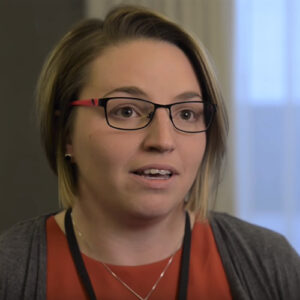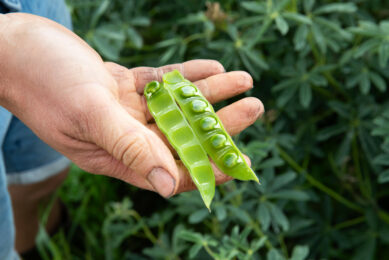Sustainable dairy farming, the bigger picture

If you were to describe the future of agriculture in one word, what would that word be? Many would choose the word ‘sustainable’. The global consumer-lead sustainability movement has brought real changes in science, practice, and policy, but what does it mean for the dairy nutritionist?
What does this mean for selecting ingredients to go into a dairy ration? And in addition to that, what does this mean for how we manage the nutrition and outputs of dairy cattle? Such a broad topic, it can feel daunting to try and get a handle on the big-picture sustainability approach that agriculture needs.
Efficiency driving sustainability
An easier way to think about sustainability is through considering efficiency. Efficiency of dairy production is getting ‘more from less’ or even ‘the same from less’. It can be applied to the dairy diet for example by using feed conversion efficiencies (FCE) and it can even be applied to the whole farm with measures such as milk solids per hectare. Sustainability in agriculture goes hand in hand with efficiency and the best dairy nutritionists are able to leverage this to responsibly improve farm productivity.
When thinking about efficiency, we should be aiming for best practice in terms of both inputs and the outputs. This can be done for the whole system, including ingredient sourcing through to animal excretions. Future challenges will require this approach to be adopted more widely across dairy nutrition. It will bring benefits to the sustainability of dairy and will ready the industry for the challenges of the future.
Sustainable sourcing of ingredients must consider both the impact of growing the ingredient and also the usefulness of that ingredient in meeting the requirements of the cow.”
Inputs to dairy production
When it comes to nutrition, the inputs of dairy production are primarily concerned with the ingredients that are used in that ration or finished feed. Sustainable sourcing of ingredients must consider both the impact of growing the ingredient and also the usefulness of that ingredient in meeting the requirements of the cow.

Maximising homegrown ingredients has always been a must and will be especially so in the new age of agriculture. When it comes to selecting non-forage ingredients, an awareness of land use, deforestation, and social impacts should be considered. Alongside this, yield per hectare, fertiliser and pesticide usage, and energy input requirements should also be understood and evaluated. The rumen microbiome – the cornerstone of dairy nutrition – can also be used to gain a sustainable advantage through the ability to break down high-fibre non human edible by-products, thereby reducing waste.
Efficiency grown at home
When developing any dairy ration, the first point of call should be to assess the quality and quantity of homegrown forage. This process, in fact, starts in the field long before that forage is being loaded into a TMR wagon. Best practices of ensiling, as well as the use of lactic acid bacteria silage inoculants, help to avoid losses of DM, maximise energy value of forage and ultimately play a critical role in sustainable use of homegrown ingredients. Getting more milk from forage is a great way to maximise whole-farm efficiency.
Mixing grass seeds for maximum forage intake
Dairy farmers know very well that fresh grass is the cheapest form of feed needed for their cows to produce quality milk at a profit. However, cows can be quite fussy eaters, and farmers need to ensure they make the right choices when picking grass seed varieties and mixes.
Spotlight on sustainable palm
Palm is often in the spotlight, however there are sustainable options for palm which offer support to smallholder communities, ensure best practice and education leading to no deforestation, no development on peat and no exploitation of people and local communities (NDPE Palm). In 2020, Judith Murdoch, sustainable palm oil expert, commented that “Simply omitting palm oil from products is a misguided approach to addressing a much larger problem. To truly be sustainable, we must look at the big picture and analyse how policies and practices are going to impact the environment and communities involved.”

Palm is the most efficient oil-producing crop available today, producing more metric tons of oil per hectare than any other vegetable crop. They are a particularly attractive commercial crop for smallholders, because they can grow on a range of soils, require relatively little fertilisers and pesticides, and bear fruit all year-round. Currently, oil palm is grown on approximately 7.49% of land devoted to vegetable oil crops, yet palm oil makes up 41.1% of all vegetable oil production (Oil World 2018).
The aim of the nutritionist is to maximise the output, in terms of animal protein production be that in meat or milk, while maintaining good animal health.”
Reducing waste: Utilising by-products
By-products by definition are the waste of an alternative industry, often the food industry. The by-products we use in dairy nutrition are commonly high in fibre or starch. By-products, that are not human food edible, can be fed to ruminants to produce milk or meat for human consumption. In particular, ruminants can utilise by-products high in fibre, such as cotton seed hulls, due to the microbial fibrolytic capability of the rumen.
Pumpkin seed cake can replace soybean meal in dairy cows
Pumpkin seed cake (PSC), a by-product of pumpkin seed oil processing, could offer dairy farmers a valuable alternative feed as a beneficial protein source.
Feeding by-products improves the edible feed conversion ratio (eFCR) which is a way of comparing human edible input versus output (Wilkinson, 2011). The feeding of such materials is a great way to utilise a resource that would otherwise be waste and most definitely contributes to improving the bigger picture of sustainable agriculture.
Outputs of dairy production
For every input there is an output. The aim of the nutritionist is to maximise the output, in terms of animal protein production, be that in meat or milk, while maintaining good animal health. Due to the complexity of the ruminant digestive system, there are some waste outputs, not least of which is methane, and another in the headlines is nitrogen. Thinking longer term, lifetime efficiency is influenced by a number or things including rearing practices and fertility management. The nutritionist of the future will take all things into account when formulating dairy rations.
Mitigating methane
The production of methane (CH4) gas in the rumen prevents the accumulation of hydrogen in the rumen as a result of fermentation. As well as having environmental consequences, CH4 production represents between 2% and 12% dietary energy loss. To give that context, a 10% energy loss for a Holstein cow could equate to 5 kilogrammes of milk production, or a body condition loss – particularly in fresh cows.
There are a number of practical ways in which CH4 can be reduced as well as some new emerging technologies. Ingredient selection, managing passage rate and improving forage quality can all have large impacts on methanogenesis and help to reduce CH4 per kg milk production. In addition to these practical dietary steps there are also some feed additives on the horizon that are able to reduce CH4. Blends of specific essential oils offer some promise to CH4 reduction through their antimicrobial effect and there will soon be synthetic additive options such as 3-nitrooxypropanol.
3-NOP: Effective methane inhibitor in dairy cows
A new research published in the Journal of Dairy Science reviews that the anti-methanogenic 3-NOP (3-nitrooxypropanol) has high potential in inhibiting enteric CH4 emission in lactating dairy cows.
Reducing CH4 brings both sustainability and diet efficiency improvements. Maximising the energy efficiency of the diet, through reducing waste excretion of CH4, could lead to reduced metabolic disorders, improved fertility, and therefore more efficient lifetime production.
Protein efficiency
The protein efficiency of ruminant diets is in the region of 16 – 40%. The lower end of this range is very low considering the cost of protein ingredients. Poor utilisation of protein represents an economic loss in the diet, but it also results in increased nitrogen (N) excretion.
There are several avenues that can be explored to improve protein utilisation. The first and most well-travelled is the use of protected protein meals or protected amino acids. Buffer feeding concentrate can be used in grazing herds to balance the high rumen degradable protein content of a fresh grass diet and avoid the underfeeding of fermentable carbohydrates. There are some feed additive options that reduce proteolytic microbial activity in the rumen, allowing for an increased proportion of the protein to bypass the rumen and be absorbed in the hind gut.
There is increasing pressure on N in many parts of the world and, in parts of Europe, we are already seeing increasing regulations around N management. Optimising the diet for better protein utilisation also offers the opportunity to improve income over feed cost and is a priority of today as well as the future.
Lifetime efficiency output
When thinking about efficiency of production, the lifetime performance of the dairy herd should also be considered. Maximising efficiency starts with the dairy calf. Calves have the greatest feed conversion efficiency in the first 3 months of life. Optimising nutrition to maximise growth in early life offers the greatest chance of maximising efficiency.
Beyond the milk feeding period, it is important to achieve growth targets to avoid delaying the age at first calving. A heifer calving at 24 months will start to return a profit in the second lactation whereas a heifer calving at 30 months will not return a profit until into the third lactation. A delay in age at first calving contributes to an overall reduction in the herd efficiency due to lost potential days in the milking herd.
How to rear healthy youngstock
Healthy youngstock paves the way for a healthy herd later on. What are the main points to consider?
Fertility is an important factor to consider when thinking about lifetime efficiency. Managing requirements in early lactation when the demand for energy is high is a key part of managing the interaction between nutrition and fertility. Maximising the energy density of the ration using a rumen-protected fat is a way to get more energy from every bite and can help to reduce BCS loss and support better fertility. As well as this, adding rumen protected fats to the diet can improve egg quality and increase the proportion of eggs that develop to blastocyst stage (Fouladi-Nashta et al 2007). More advanced nutrition considers the ratios of palmitic (C16:0) and oleic (C18:1) fatty acids to support both production and fertility at different stages throughout lactation, contributing to better fertility and overall herd sustainability.
Great opportunity for dairy
The drive to improve sustainability of dairy production should be seen as a great opportunity to focus on reaching better efficiencies. A big picture approach that considers both the inputs and the outputs of dairy production is needed for the future. There is more to learn in both science and application but with a collaborative approach, the industry is positioned well to build a sustainable future and reputation with consumers across the world.
Join 13,000+ subscribers
Subscribe to our newsletter to stay updated about all the need-to-know content in the dairy sector, two times a week.










